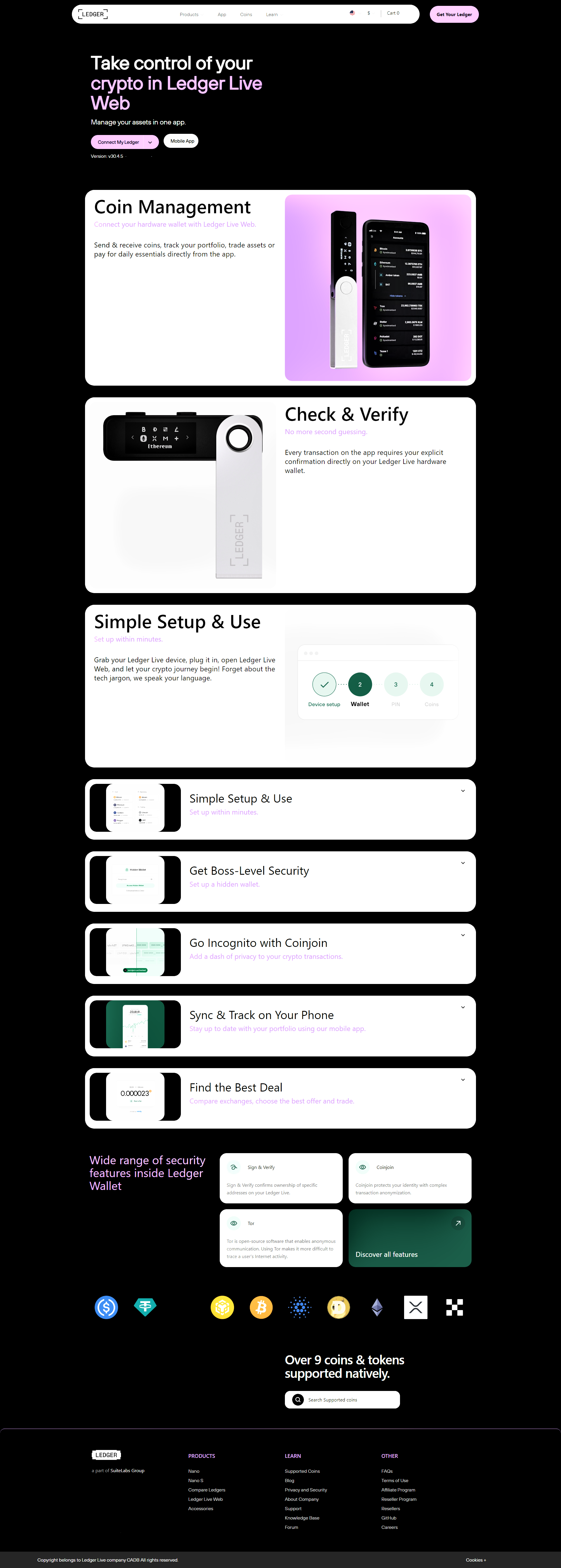Ledger.com/Start – Official Ledger Hardware Wallet Setup
Welcome to Ledger.com Start, the official onboarding process designed to help you initialize your Ledger hardware wallet with complete security. This guide follows the authentic steps recommended for setting up your wallet, installing Ledger Live, creating your PIN, and safely recording your recovery phrase.
1. Introduction to Ledger Hardware Wallets
A Ledger hardware wallet provides an unmatched level of protection for your digital assets. Using a dedicated secure element chip, your private keys are isolated from online threats and malware. The Ledger.com Start process ensures that each device begins from a verified and trusted state.
2. Beginning Your Setup
To begin, unbox your Ledger device and inspect it for any tampering. Every Ledger device undergoes authenticity verification before the setup process begins. Once confirmed, connect it to your computer using the supplied USB cable.
3. Installing Ledger Live
Ledger Live is the companion application for managing your assets. Once installed, follow the on-screen instructions to pair your device. Ledger Live enables you to view balances, manage applications, and securely interact with your hardware wallet.
4. Setting Up as a New Device
When prompted, select “Set up as new device.” The Ledger secure element will generate your private key internally. This process is completely offline — no data leaves your device, ensuring total protection of your assets.
5. Creating a Secure PIN
Choose a strong and memorable PIN. This PIN locks your hardware wallet and prevents unauthorized access. Multiple incorrect attempts will cause the device to reset automatically, preserving your security.
6. Writing Down Your Recovery Phrase
The recovery phrase is a 24-word backup that can restore your wallet if it is lost or reset. Write down each word carefully and store it in a secure, offline location. Do not save it digitally, take photos, or share it with anyone. Possession of the recovery phrase grants full control over your funds.
7. Verifying Firmware Integrity
During setup, your Ledger device verifies its firmware signature to ensure authenticity. Only firmware signed by Ledger can run on the device. If a warning appears, do not proceed and verify your device’s legitimacy.
8. Pairing with Ledger Live
Once initialization is complete, pair your device with Ledger Live. This allows you to manage assets and view account balances while your private keys remain protected within the secure element.
9. Secure Transaction Confirmation
All transactions require manual approval on the device’s display. Always confirm the details — amount and address — directly on your Ledger screen before validation. This physical confirmation eliminates remote tampering risks.
10. Updating Firmware Safely
Periodic firmware updates improve performance and add compatibility for new assets. These updates can be done securely through Ledger Live without exposing private data.
11. Long-Term Security Practices
- Keep your recovery phrase in a secure offline location.
- Never share your PIN or recovery phrase with anyone.
- Use only official Ledger software for management and updates.
- Verify transaction details directly on your hardware screen.
- Disconnect your device when not in use.
12. Troubleshooting
If your Ledger device is not detected, try reconnecting directly to a computer port, avoiding USB hubs. Restart both the device and Ledger Live if necessary. Your wallet’s integrity remains secure during these steps.
